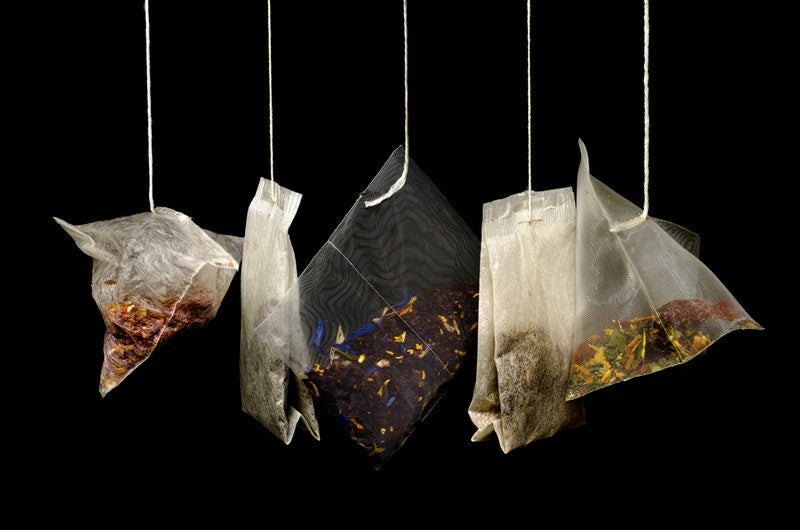Everything You Need To Know About Tea Bags

You’re probably familiar with the function of a tea bag. It contains aromatic tea leaves in a sealed bag so that you can seep it in hot water and drink to your liking. But let’s dive deeper into why we care about the simple little tea bag.
The origins of the delicate bag of tea are still up for debate. A popular belief is that a tea importer in New York named Thomas Sullivan stumbled upon the invention of the tea bag by accident. Rather than send samples of his tea in a tin box (which was common in the early 1900s), he cut costs and sent his samples out in small, hand-sewn sacks. His customers thought this was part of the tea experience and simply dropped the entire sack into hot water. From there, the tea bag took off.
Now, we’re hit with different sizes, shapes, and materials that make up the simple tea bag. It’s important to anticipate the needs and desires of the consumer when choosing the type and style of tea bag to use for your business. Here’s everything you need to know about invention.
Material
The tea bag has evolved to include a variety of materials, including cheesecloth, gauze, filter paper, cotton muslin, food-grade plastic (such as nylon), and biodegradable PLA/Soilon.

Filter paper (shown above) is the generic go-to material. It’s bleached, yet still environmentally safe. Cotton/cloth muslin bags (shown below) are the reusable and organic option, although using these might shift the taste of the tea as it’s a thicker material.

PLA/Soilon (shown below) is made from corn starch and is an environmentally friendly tea bag option as it is biodegradable. Tea bags made from this material are often labelled “silky” and come in a pyramid shape.

The food-grade plastic tea bag is, yes, made from plastic and labelled as nylon. Keep in mind that nylon bags (shown below) are made of synthetic polymer fibres and are not biodegradable.

Shape

The shape has undergone a few modifications over the years but has held onto that same concept from Thomas Sullivan in 1908. Now, we have single chamber tea bags, which means the bag is two-sided, while a double chamber bag is four-sided.
You can opt for a round shape with no string attached, or the classic rectangular shape that we know and love. There’s also the flo-thru tea bag, which was introduced in 1952 — it has four sides and is meant to give the leaves more room to open.
Pyramid-shaped tea bags have increased in popularity as it’s marketed as a high-end experience. The pyramid tea bag is meant to brew a better cuppa because of the 3-D shape, which gives the leaves more room to brew. Biodegradable PLA/Soilon is the most common material used to make a pyramid-shaped tea bag as the mesh allows hot water to interact with the tea and release more nutrients.
Size

Tea bags come in two sizes: large and small. Simple as that. The large is made for a teapot while the small is made for an individual-sized cup. Small tea bags usually hold about 2-4 grams of herbs while a large tea bag can hold about 28-85 grams of herbs.
Why we care

Many people prefer to use the convenient tea bag form as it’s easier and quicker to brew the perfect cup of tea. Businesses who invest in wholesale tea can establish the financial return on investment because the value of manufactured teabags is much easier to establish than loose tea leaves by weight. Most businesses in the hospitality and service industries prefer tea bags as they can be served to customers quickly and with no mess
Teavision is Australia’s leading tea bag manufacturer. We import high-quality tea, as well as provide tea bag manufacturing. We use only the highest quality Japanese made products for tea bag manufacturing; we ensure that each and every bag is strong enough to last and functional enough to give you the burst of flavour you need when you are enjoying a cup of tea. Consider these qualities when thinking about your manufactured tea bag needs.
- Marina Nazario







Comments 0